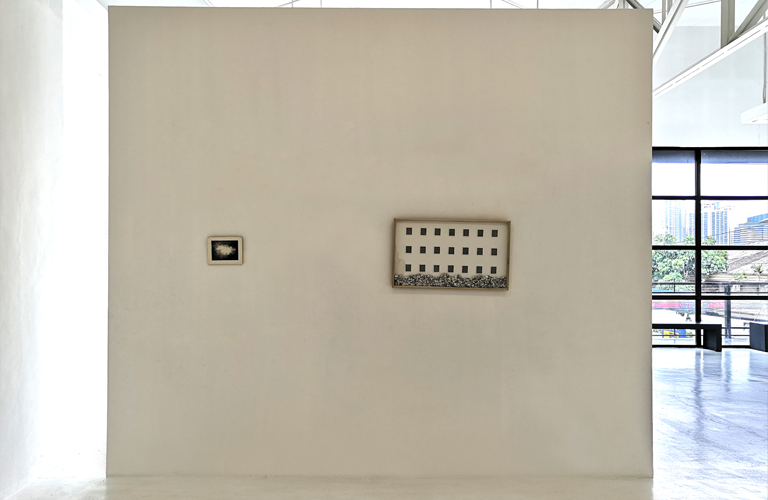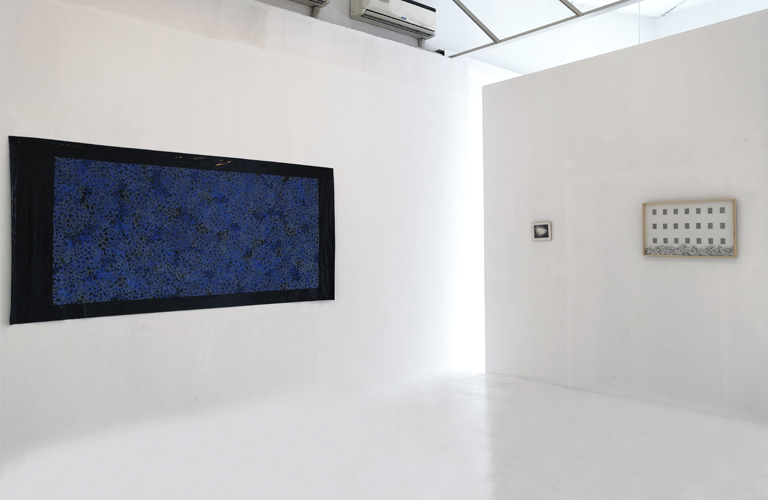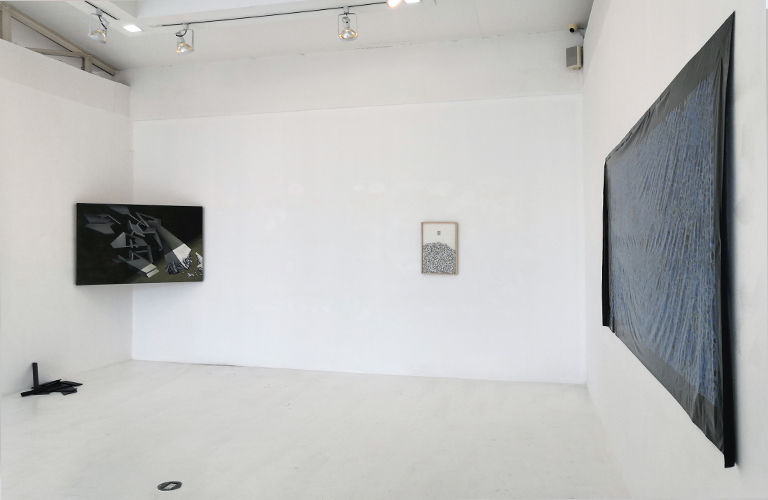
SUBSIDING NOISE
“Depois da tempestade vem a calmaria” is a popular saying in Brazil, which roughly translates to “After the storm comes the lull.” Describing the quiet aftermath of loud and, sometimes, chaotic events, thus, marking indescribable moments between endings and beginnings, the exhibition, “Subsiding Noise”, strives to make sense of times of stillness and placidity; how within these junctures, a contemplative state surfaces on relevant matters. The artists find themselves amid visual representations of silent scenes, which declare their introspection on the weight and gravity of the moment within the movement, the activity, and the transformation that tread among the lives we constantly lead.
Such is evident among Jem Magbanua’s dramatic drawings of a Japanese forest. Completed during her artist residency in a remote town in Japan, Magbanua created works from a quiet place that is the total opposite of the two cities she calls home: Singapore City and Manila. Rendered in graphite, Magbanua’s drawings are more than landscapes: they are life in motion that can only be illustrated from a place of calmness, where one has a better opportunity to listen to the hush and rustling of leaves.
Meanwhile, the layers of blue patterns found in Mars Bugaoan’s work summarize the laborious tasks involved in his art-making. Here, the artist places an emphasis on movements similar to the process of “action painting” wherein the rubbercut patterns are repeatedly thrown towards the plastic surface until the area has been entirely covered with print. While the final output is charged with the artist’s presence marked among the prints he made, once displayed, the audience is only left standing and looking at a still image: the silent translation of every playful, intense, and spontaneous action transferred from the artist’s hands to his final work.
Filled with geometrical shapes and forms, Rene Bituin observes the irreparable changes found in a place after a night of disruption. Rubbles and debris occupy the bleak setting of Bituin’s paintings, which somehow trigger our eyes to focus on the parts that have been weeded out from the scenes. These works resemble the trail of rubbish left after the thundering New Year’s Eve celebrations, which are found in every corner of the country, where streets are filled with trash from fireworks and objects used to create loud sounds to dispel evil spirits and to invite good luck. Bituin sends us back to that short unruffled gap that portends of an unknown future.
In his body of work, Jiddu San Jose compiles hundreds of gray paper, which he visualizes as offerings— letters, poems, prayers, and songs—- after a distressing tragedy. Dyed with achromatic hue, these pieces of paper evoke the tender marks of grieving made for a departed loved one, creating an ephemera that stipulates a deeply personal negotiation to accept the unfortunate event. San Jose’s portrayal of “Subsiding Noise” is hinged on the drifting process of grieving wherein he can no longer remember the sound of the departed’s presence.
Through these works, a new perspective emerges and encourages us to listen and notice the sudden silence around us. “Subsiding Noise” pulls us away from the mayhem and into a tranquil place.
– Gwen Bautista
Works

UNSAN MUSHO I

V. KOMOREBI

Vi. KOMOREBI
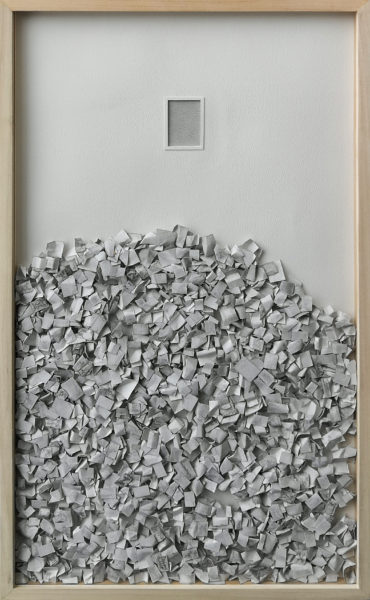
BOOK OF ELEGIES

BUILDING OF ELEGIES
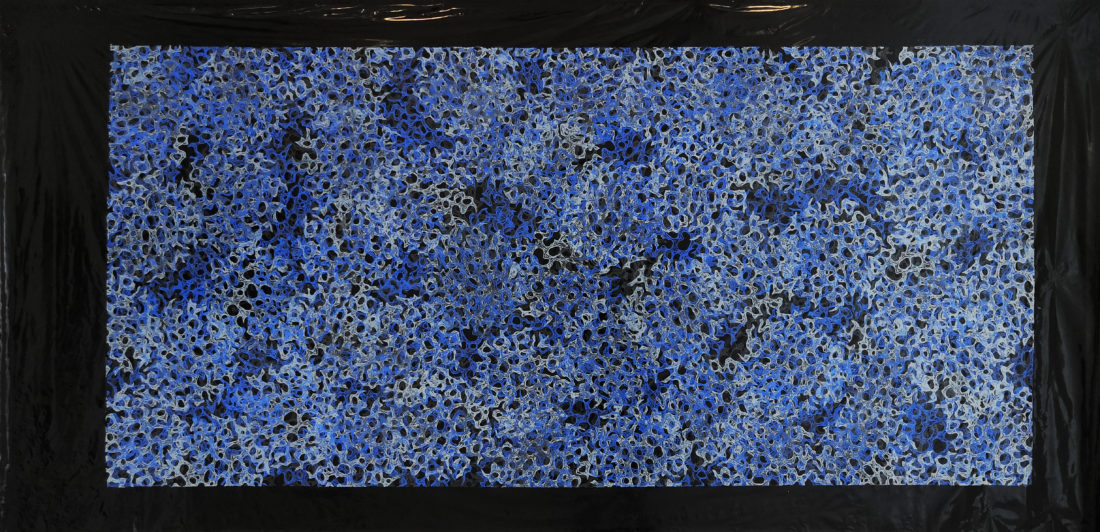
THE SILENCE AFTER

MMXIX: SETTLING DUST

MMXVIII: CONCLUSION
Documentation
